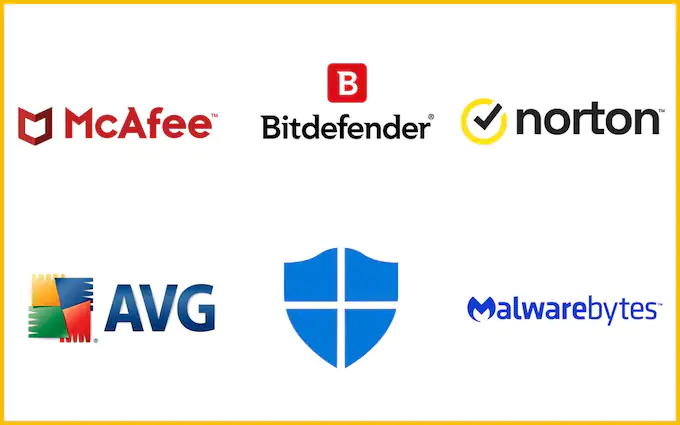Top 10: Malwares of 2023

Malware is a term that encompasses various types of malicious software, such as viruses, worms, trojans, ransomware, spyware, adware, and more. Malware can infect your devices, steal your data, encrypt your files, damage your system, and cause other serious problems. Cybercriminals are constantly developing new and more sophisticated malware to evade detection and exploit vulnerabilities.
In this article, we will look at the top 10 most dangerous malwares in 2023, based on their prevalence, impact, and severity.
1. SocGholish
SocGholish is a downloader written in JavaScript and is distributed through malicious or compromised websites. It uses fake software update notifications to trick users into downloading and executing the malware.
SocGholish can install additional malware, such as the NetSupport Remote Access Tool, which allows attackers to access and control the infected devices. SocGholish was the most common malware detected by the Multi-State Information Sharing and Analysis Center (MS-ISAC) in Q3 2023, comprising 31% of the Top 10 Malware incidents.
2. NanoCore
NanoCore is a remote access trojan (RAT) that can perform various malicious activities on the compromised devices, such as keystroke logging, file manipulation, screen and webcam capture, password stealing, and audio recording. It can also download and execute additional plugins, such as a file encryptor, a keylogger, a password stealer, and a reverse proxy.
It is often delivered via malspam campaigns that use malicious attachments or links to execute the malware. NanoCore was the second most prevalent malware detected by the MS-ISAC in Q3 2023, accounting for 15% of the Top 10 Malware incidents.
3. RogueRaticate
RogueRaticate is a malicious Internet Explorer browser extension that redirects users to fake update pages and downloads additional malware, such as the NetSupport Remote Access Tool, on the infected devices. It can also modify the browser settings, such as the homepage and the search engine, and display unwanted ads and pop-ups. RogueRaticate was the third most common malware detected by the MS-ISAC in Q3 2023, comprising 11% of the Top 10 Malware incidents.
4. Agent Tesla
Agent Tesla is a spyware family that can monitor and collect user input, system clipboard, credentials, and browser data from the infected devices. It can also take screenshots, capture webcam images, and exfiltrate data via SMTP, FTP, or HTTP1. It is often distributed via malspam campaigns that use malicious attachments or links to lure the victims into executing the malware1. Agent Tesla was the fourth most prevalent malware detected by the MS-ISAC in Q3 2023, accounting for 10% of the Top 10 Malware incidents1.
5. Fake Browser
Fake Browser is a malicious Chrome browser extension that redirects users to fake update pages and downloads additional malware, such as the NetSupport Remote Access Tool, on the infected device. It can also modify the browser settings, such as the homepage and the search engine, and display unwanted ads and pop-ups. It was the fifth most common malware detected by the MS-ISAC in Q3 2023, comprising 7% of the Top 10 Malware incidents.
6. ArechClient2
ArechClient2 is a downloader that can install additional malware, such as the NetSupport Remote Access Tool, on the infected devices. It can also collect system information, such as the operating system, the processor, and the memory, and send it to a remote server. It is mainly distributed via malspam campaigns that use malicious attachments, such as Microsoft Office documents, that exploit vulnerabilities or use macros to execute the malware. ArechClient2 was the sixth most prevalent malware detected by the MS-ISAC in Q3 2023, accounting for 7% of the Top 10 Malware incidents.
7. CoinMiner
CoinMiner is a cryptocurrency miner family that typically uses Windows Management Instrumentation (WMI) to execute malicious scripts and mine various cryptocurrencies, such as Bitcoin, Monero, and Ethereum. The Malware can consume a large amount of CPU and GPU resources, slowing down the performance of the infected devices and increasing the electricity costs. It can also download and install other malware, such as ransomware, on the compromised systems. It was the seventh most common malware detected by the MS-ISAC in Q3 2023, accounting for 6% of the Top 10 Malware incidents.
8. Remcos
Remcos is a remote access trojan (RAT) that can perform various malicious activities on the compromised devices, such as keystroke logging, file transfer, screen and webcam capture, audio recording, and remote shell execution. It can also download and execute additional malware, such as ransomware, on the infected devices. Remcos is mainly distributed via malspam campaigns that use malicious attachments or links to execute the malware. Remcos was the eighth most prevalent malware detected by the MS-ISAC in Q3 2023, accounting for 5% of the Top 10 Malware incidents.
9. Amadey
Amadey is a simple trojan that can execute commands, download and upload files, and collect system information from the infected devices. It is often used as a first-stage malware to deliver other malware, such as ransomware, on the compromised systems. Amadey is mainly distributed via malspam campaigns that use malicious attachments, such as Microsoft Office documents, that exploit vulnerabilities or use macros to execute the malware. Amadey was the ninth most common malware detected by the MS-ISAC in Q3 2023, accounting for 5% of the Top 10 Malware incidents.
10. AsyncRAT
AsyncRAT is a remote access trojan (RAT) that can perform various malicious activities on the compromised devices, such as keystroke logging, file manipulation, screen and webcam capture, password stealing, and audio recording. It can also download and execute additional malware, such as ransomware, on the infected devices. AsyncRAT is often delivered via malspam campaigns that use malicious attachments or links to execute the malware. AsyncRAT was the tenth most prevalent malware detected by the MS-ISAC in Q3 2023, accounting for 3% of the Top 10 Malware incidents.
Conclusion
Malware is a serious threat that can cause significant damage to your devices, data, and finances. To protect yourself from the most dangerous malwares in Q3 2023, you should follow some basic security practices, such as:
- Use a reliable antivirus software that can detect and remove malware in real time.
- Keep your operating system and applications updated with the latest security patches.
- Avoid opening suspicious emails, attachments, or links from unknown sources.
- Backup your important files regularly to an external drive or a cloud service.
- Use strong and unique passwords for your online accounts and enable two-factor authentication whenever possible.
- Be careful when using public Wi-Fi networks and avoid entering sensitive information on unsecured websites.
By following these tips, you can reduce the risk of becoming a victim of malware and keep your devices and data safe. Stay vigilant and stay safe!
You think you have a story worth everyone’s time? SUBMIT A STORY and we will publish it.
Share this content:



Post Comment